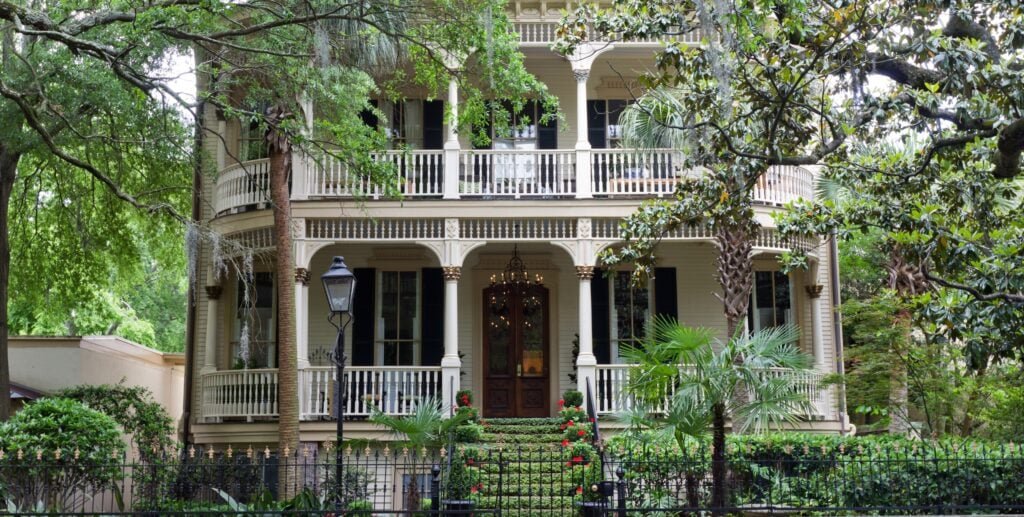A recent CNBC survey based on cost per square foot revealed that the United States’ most expensive real estate market is San Francisco’s South of Market, which contains historic Victorian buildings surrounded by Beaux-Arts and neoclassical government buildings. On the other coast, in New York, Brooklyn’s most expensive real estate market is Brooklyn Heights, a leafy neighborhood of century-plus-old brownstones.
Both have designated historical status, meaning their period architecture cannot be changed. However, not all older neighborhoods are historic. For investors looking to maximize equity appreciation, the key is buying an older home on the cusp of receiving the historic designation.
Historic Districts Can Gain 20% Appreciation Per Year
There are more than 2,300 local historic districts in the United States, and new ones are being considered constantly. Every state has them, and they aren’t out of most investors’ price range. The government often offers grants, low-interest loans, and tax breaks to renovate homes in these areas.
A real estate analysis of Washington, D.C. by economist Donovan D. Rypkema showed historic districts can increase property values. Indeed, a 2011 study of Connecticut historic districts and property values found this designation could raise it almost 20% per year in some areas.
The first step in becoming a historic district is to be designated a “landmark” status. Neighborhoods with historic churches and older buildings are particularly good candidates, as they are most likely listed in or eligible for listing in the National Register of Historic Places.
Becoming landmarked is not fast or easy, but it’s a resource that investors often overlook. Once a neighborhood is afforded a historic designation, the older buildings attain prestige because they are immediately protected from developers. Preserving architectural gems can profoundly affect property values in cities with new, gleaming condo towers like New York.
Crown Heights North, a gentrifying neighborhood in Brooklyn with a reputation for crime that is also filled with brownstones and old churches, was given historic status in 2011. All metrics point to a massive shift in not only property values, which occurred throughout Brooklyn but crucially, household income (the largest demographic earned below $20,000 annually in 2000, compared to $100,000 to $250,000 in 2021). Poverty had dropped to 14.8% compared to 18% citywide, while rents increased by 48.8% between 2006-2021.
Things to Be Aware Of When Buying an Older Home
If you’re buying a home in a landmarked designated or historic district, it’s likely older and needs renovation. There are a host of potential issues you could incur. Here are some considerations.
You might be entering into a restoration rather than a renovation
Buying in a historically designated neighborhood or a landmarked one means adhering to a strict code.
Common stipulations for rehabbers include using wooden window casements that match the original ones that came with the home instead of model metal and vinyl ones. Exterior railings, gates, and doors will likely be replaced with like ones or restored to their previous condition. Ditto goes for moldings, motels, and fireplaces. However, mechanical walls, such as plumbing and electrical upgrades, will likely be unaffected and can be upgraded with modern materials.
Homeowners insurance could cost more
Home insurance rates can be higher for a historic home due to the cost of building to historic specifications in the event of a total loss. Also, if the home is larger, with various outbuildings as part of the parcel, this will also increase the insurance cost.
Getting Financial Assistance for Your Renovations
The good news is that grants and loans can help investors with renovations. Your state Historic Preservation Office (SHPO) should be your first stop to learn about funding advantages.
The National Trust for Historic Preservation’s Historic Tax Credit program (HTC) is also an invaluable resource. Historic preservation easements are also worth looking into, and if they apply, they can also bring additional tax benefits.
A Historic Home Can Be a Good Investment for a Vacation Rental
If you own a historic home in a scenic part of the country or in a bustling downtown city neighborhood, consider a vacation rental business.
With cultural tourism (defined by the United Nations World Tourism Organization as “movements of persons for essentially cultural motivations such as study tours, performing arts and cultural tours, travel to festivals and other cultural events, visits to sites and monuments, travel to study nature, folklore or art, and pilgrimages”) accounting for 40% of tourism in some countries, rental sites Airbnb, VRBO, and Joybird have sections dedicated to historic homes that appeal to travelers looking to avoid sterile corporate hotels in favor of a character-filled, welcoming stay. Marketing your home’s historical status and choosing tasteful interior designs will appeal tremendously to visitors. If you own a historic home, you could also get the advantage of state websites (here’s one example from Pennsylvania) promoting your rental to attract visitors.
Final Thoughts
Historic homes are character-filled and often located in the scenic or older parts of towns and cities where most people want to live. This results in rapid appreciation and high rental demand. Check with your city’s rental laws to ensure your home can accommodate guests.
Entering a historic home renovation requires time, patience, and experience when following the city’s guidelines. As an investor, you can be certain that if you maintain your property, it will likely increase in value far faster than other non-historic homes in the area.
Ready to succeed in real estate investing? Create a free BiggerPockets account to learn about investment strategies; ask questions and get answers from our community of +2 million members; connect with investor-friendly agents; and so much more.
Note By BiggerPockets: These are opinions written by the author and do not necessarily represent the opinions of BiggerPockets.


